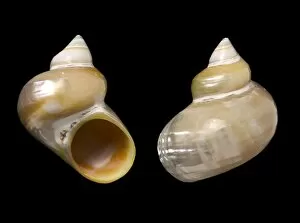Aspidobranchia Collection
"Aspidobranchia: A Colorful Array of Molluscs and Shells" Step into the mesmerizing world of Aspidobranchia
All Professionally Made to Order for Quick Shipping
"Aspidobranchia: A Colorful Array of Molluscs and Shells" Step into the mesmerizing world of Aspidobranchia, where vibrant hues and intricate patterns adorn the shells of various molluscs. From the captivating Green abalone shells (C016 / 6055) to the elegant Trochus snail shells (C016 / 6044), this diverse group showcases nature's artistic prowess. Amongst them, Turban shells (C016 / 6024 & C016 / 6026) stand out with their spiral-shaped architecture, reminiscent of a majestic crown. These exquisite treasures are complemented by Trochus snail shells (C016 / 6046 & C016 / 6045), boasting a delightful blend of colors that captivate any observer. The enchanting Green abalone shells (C016 / 6054 & C016 / 6053) add a touch of emerald allure to this collection. Their smooth surfaces reflect light in a way that seems almost magical, inviting you to explore their hidden depths. Within this assemblage lie six molluscs, including four gastropods and two bivalves. Each species carries its own unique charm and contributes to the biodiversity found within Aspidobranchia. Among them is Guildfordia yoka – an extraordinary creature known for its striking appearance and remarkable resilience. Aspidobranchia serves as a reminder of nature's ability to create beauty in even the smallest details. Whether you are an avid collector or simply appreciate Mother Nature's wonders, these stunning specimens will undoubtedly leave you awe-inspired.






















